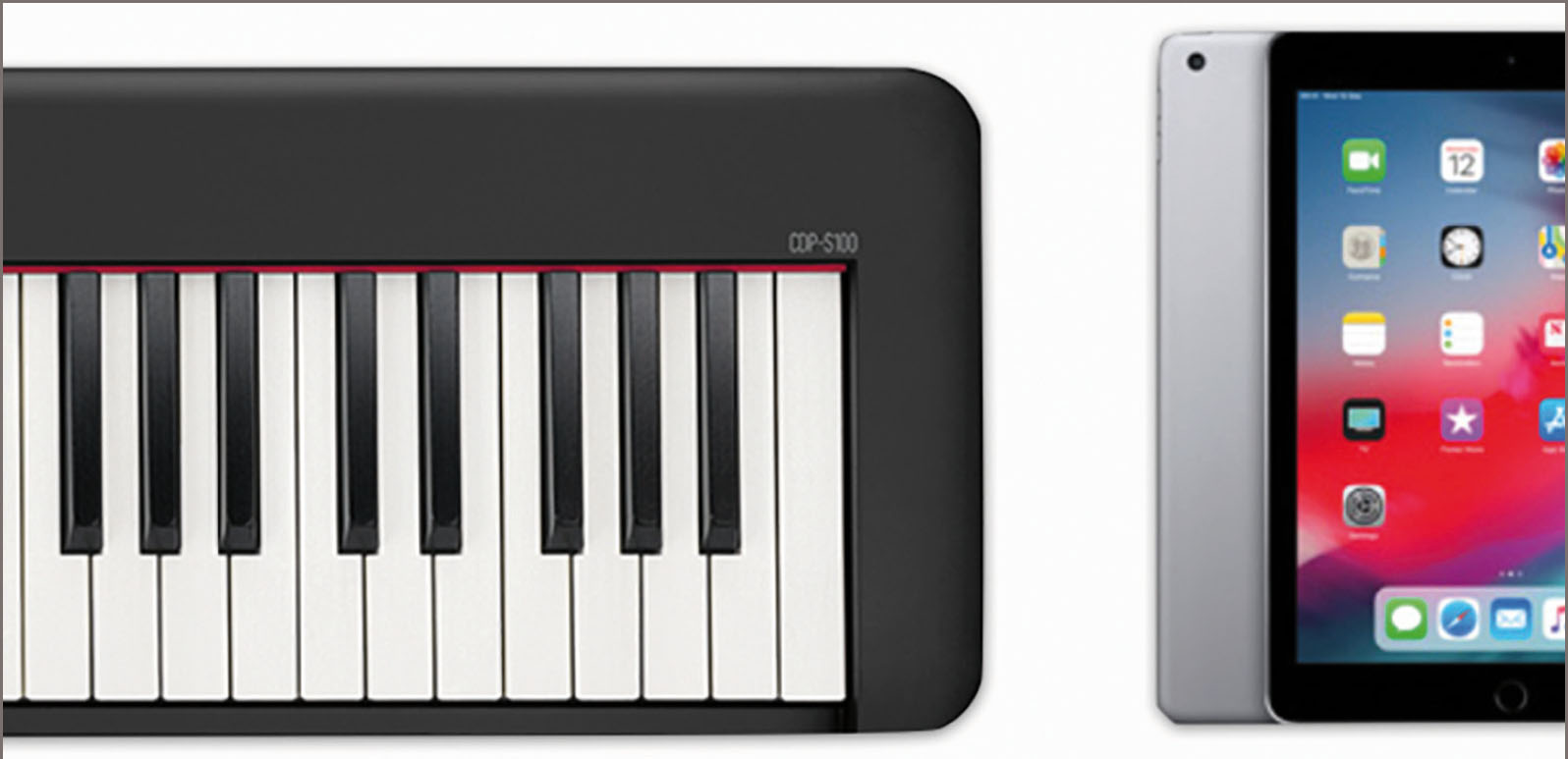
Price: £330 – retail (approx.)
Casio has been praised for its high-quality and affordable range of Privia and Celviano digital pianos, which includes premium-grade digital pianos – like the Bechstein-linked Grand Hybrid pianos – down to inexpensive beginner keyboards. It recently won a coveted ‘best in show’ award at the 2019 NAMM music trade show for one of its stage pianos. Other new models include two ultra-compact 88-note digital pianos: the CDP-S350 and the CDP-S100, and I will be testing the latter, which also happens to be the most inexpensive in the range.
What's included
In addition to the piano, the box contains a music rest, the power cable and adaptor, as well as a basic sustain pedal. You can also purchase a matching stand, making the keyboard a more permanent piece of furniture, alternatively, it can sit happily on any suitable keyboard stand. The instrument is extremely portable and only weights 10.5kg but still produces a satisfying output volume. Interestingly, the piano can even be powered from just six AA batteries, which should allow about 13 hours of use – simply astonishing. This is a very useful feature, which obviously enables the instrument to be played when there is no power supply available – you could even take it outside for a novel performance opportunity or on a school music tour.
As well as a headphone socket that cuts out the internal speakers, making the piano ideal for silent practice, there is also an aux in socket so that you can connect an MP3 player or similar and play along to backing tracks or existing songs. A USB port enables you to connect a computer or tablet/smart phone for additional functions. Alternatively, a computer/tablet will allow you to use the CDS-100 as a controller keyboard in your preferred program.
Piano action and sounds
Despite the fact that this is an entry-level model, the 88-note keyboard has simulated ebony and ivory textured keys that feel pleasing under the fingers and aren't too slippery. The piano action is described as ‘Scaled Hammer Action II’ and was very natural and comfortable for me, with the touch being firm and responsive enough to promote a solid piano technique.
There are ten different keyboard sounds to choose from, with the default ‘Grand Piano’ being the best to my ears. The default pitch is instantly activated using a dedicated switch, while other sounds are selected via the ‘function’ control and then pressing specific piano keys. All these selections are clearly marked near the keys on the instrument so the process is very simple. The other sounds included are three electric pianos, harpsichord, strings, pipe organ and jazz organ. It is possible to layer two sounds, like harpsichord and strings, but I am not sure you can adjust the individual layer volume. There are various reverb settings, including the echoes of a large hall and a chorus effect which might be useful for the electric piano sounds.
There is a built-in metronome, with the tempo being adjusted via the ‘function’ switch and the pressing of various keys. Although this process is quite straightforward, I would have preferred a visual readout to indicate tempos. The first beat of each bar is emphasised by a different sound from the metronome (you can choose to turn this aspect off) and you can specify bar lengths between 2 to 9 beats so you could have the metronome beating 5/4 or 9/8, for example, as well as more common time signatures.
Casio ‘Chordana Play for Piano’ app
You can download the free Chordana Play app for iOS and Android devices and then control all the settings of the piano using the app as a remote control. The app also allows you to select instruments, layer sounds and play internal songs, as well as transpose or change the keyboard touch settings. Other functions include, turning the metronome on and off, changing the beat and tempo and recording MIDI tracks. The score viewer in the app will display songs in the included music library, which can also be used as a regular PDF viewer. As a whole, it is incredibly useful and much more user-friendly than finding functions via keys on the key bed. The range of functions available is obviously limited by the specific model of keyboard that you have.

You can connect the piano to Chordana Play to unlock new features
Conclusions
Overall, this is a fine digital piano. The action is very playable and the sounds are of a good quality. The fact that there aren't too many buttons and flashing lights is also advantageous as people can concentrate instead on their performance practice. Thoroughly recommended.








